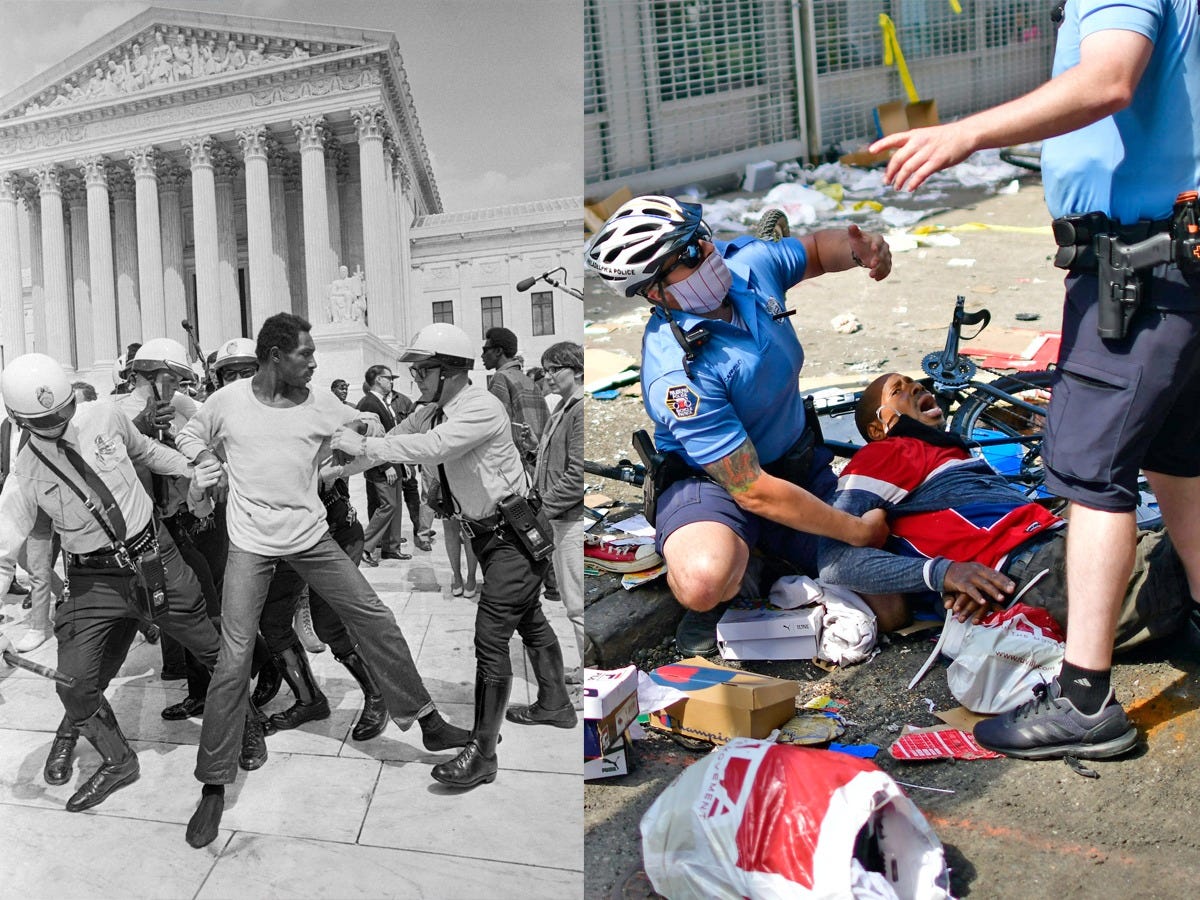- Protests have erupted across the United States in response to the death of George Floyd, who died after a Minneapolis police officer knelt on his neck even as Floyd told him that he couldn’t breathe.
- The Black Lives Matter demonstrations are similar to those that took place in the 1960s during the civil rights movement.
- Photos comparing protests from the 1960s and from 2020 show that demonstrators have used similar strategies and have been met with similar force from the police.
- Visit Insider’s homepage for more stories.
A group of protesters confronted the police in Minneapolis, Minnesota, in 2020.
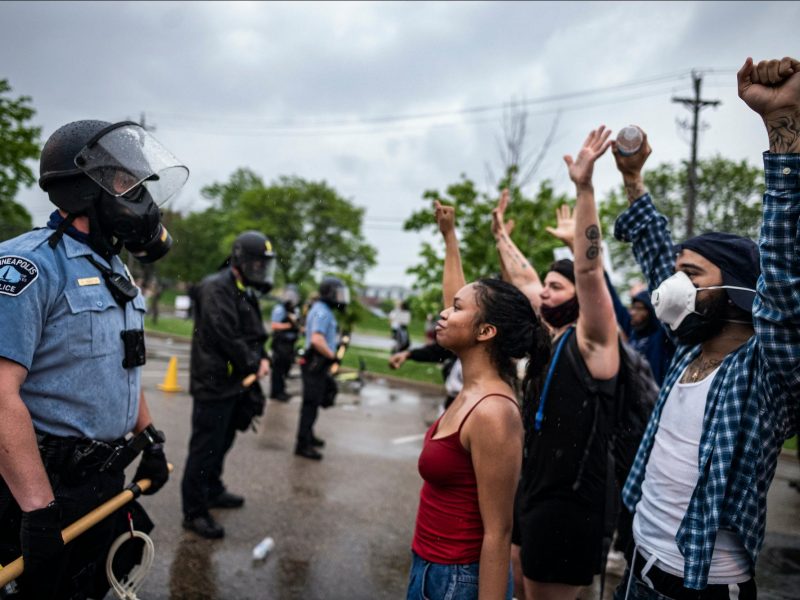
Protests began in Minneapolis on Tuesday, May 26, following the death of George Floyd.
Floyd, 46, died on May 25 after a white police officer knelt on his neck as Floyd begged the officer to stop and told him he couldn’t breathe.
Protesters in Minneapolis were seen standing unarmed across from a group of officers, who held batons and hid behind face shields.
The scene is not dissimilar to this shot of protestors facing the National Guard in 1968.
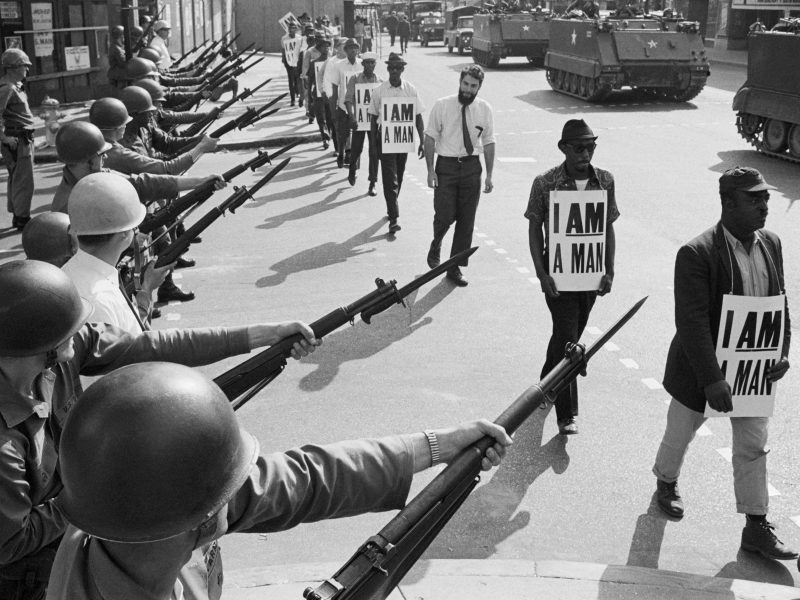
In 1968, strikers and supporters gathered to protest the horrible working conditions and treatment of sanitation workers in Memphis, Tennessee. The sanitation workers’ strike is actually what brought Martin Luther King Jr. to Memphis, where he was assassinated on April 4.
Sanitation workers marched on Memphis' Beale Street in the photo, wearing identical signs that say "I Am A Man," highlighting the inhumanity with which they were treated by the state.
The National Guard was deployed to try to contain the protests.
In 2020, protesters demonstrated peacefully on a road in West Hollywood by sitting with signs.
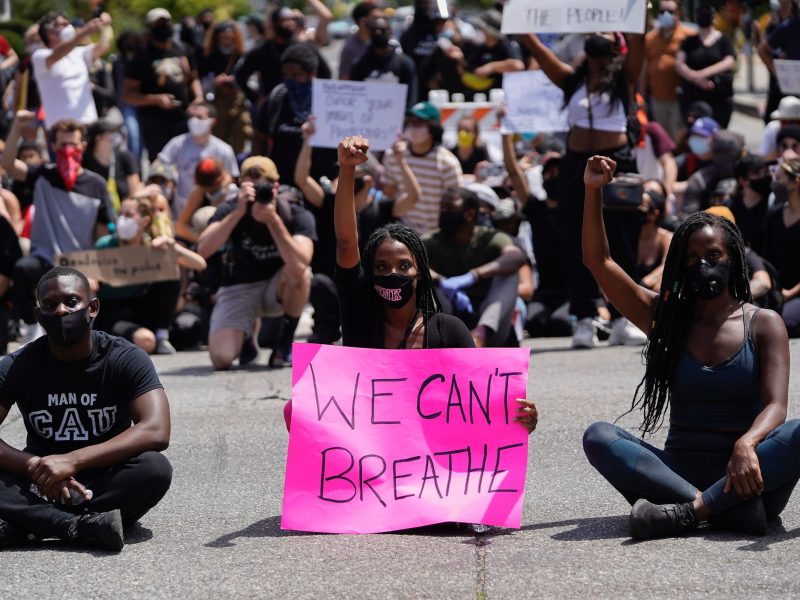
Protests spread to California on the Wednesday following Floyd's death. They marched all over the city, even briefly taking over the LA highway.
In this photo, three protesters sat in the middle of an intersection, with a larger group of demonstrators behind them. The woman in the middle held a sign that says "We can't breathe."
Protesters across the country have chanted "I can't breathe," the final words uttered by both Floyd and Eric Garner, who died after he was held in a choke hold by a New York City police officer in 2014.
In 1963, leaders of the civil rights movement marched with signs in Washington, DC.
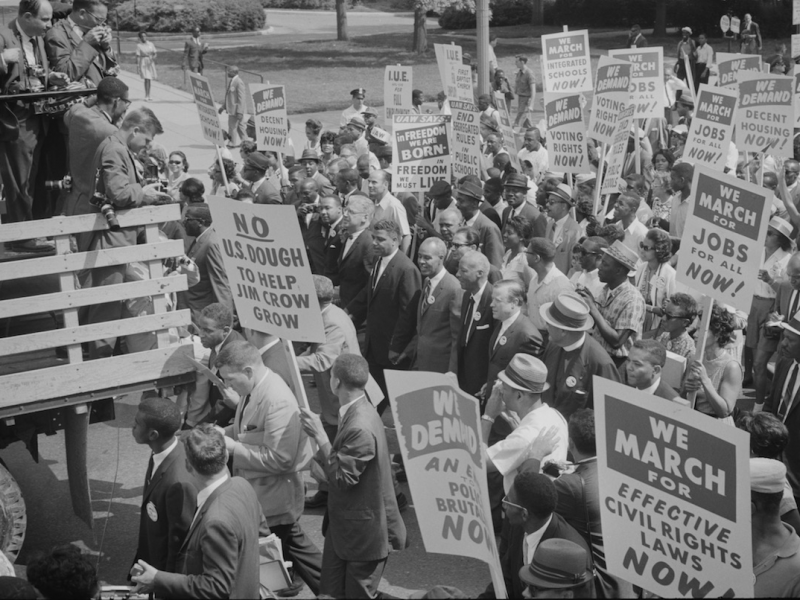
In 1963, more than 200,000 demonstrators gathered in DC for the March on Washington, where Martin Luther King Jr. gave his famous "I Have a Dream" speech.
Ahead of the gathering at the Lincoln Memorial, dozens of protesters marched through the city, carrying signs that called for civil rights legislation and jobs for black Americans.
A man raised his fist as he looked at the White House during a protest for George Floyd on May 31, 2020.
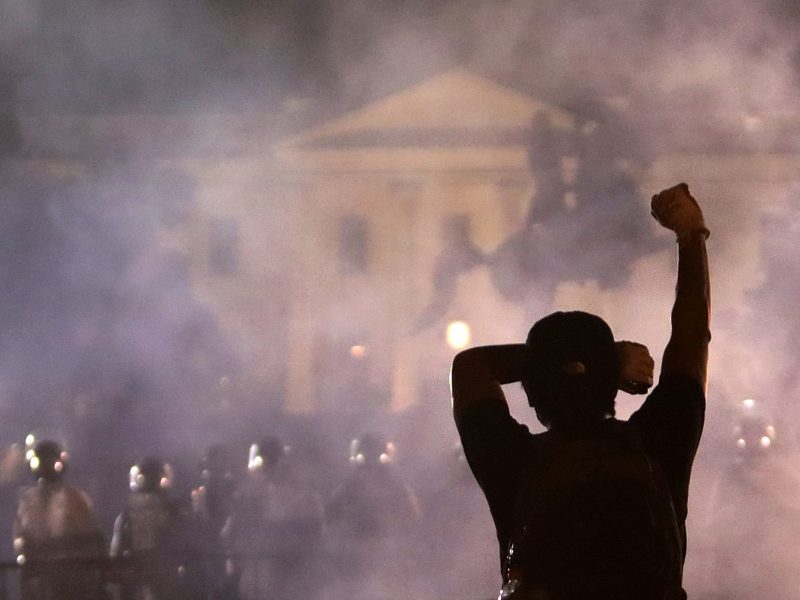
Protests across Washington, DC, escalated and became violent on Sunday night, with the White House going dark as protesters gathered in front of it and set fires nearby.
The man in this photo faced the White House, looking toward the police force standing in front of the building with his hand raised in a fist, the symbol of the Black Power movement.
A group of students raised their hands in the Black Power salute at a protest in 1969.
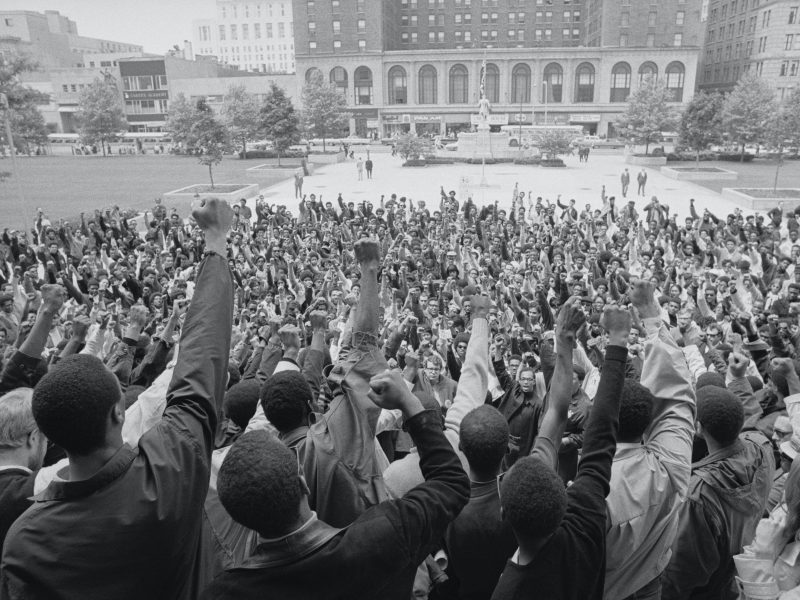
In 1969, around 500 students from Central State University protested the school's limit on the number of out-of-state students admitted to the college. The demonstrators gathered at the Ohio State House.
Almost every member of the large group raised their hands in protest.
Police officers advanced toward protesters in Washington, DC, in 2020.
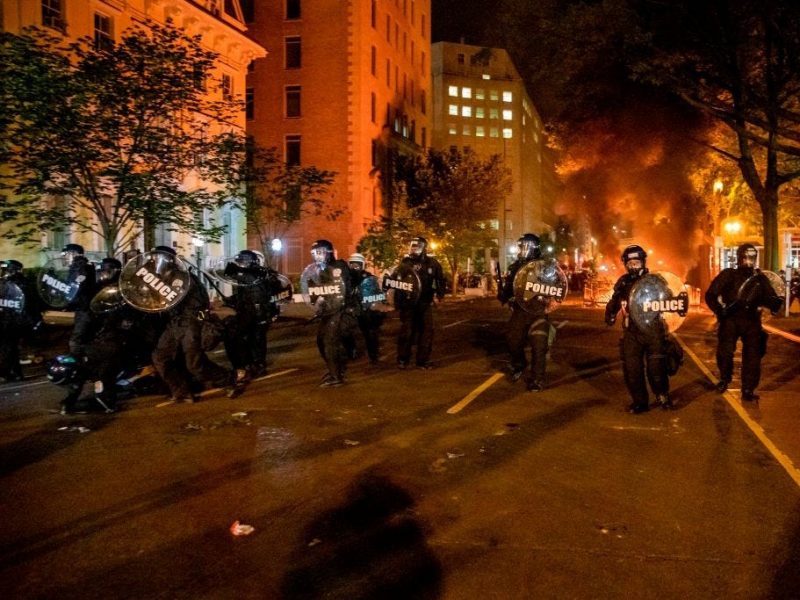
The protests in DC became violent on Sunday, with activists setting fires around the White House, looting stores downtown, and vandalizing monuments.
Police officers dressed in face coverings and armed with shields launched tear gas and rubber bullets at the protesters.
Officers blocked a group of protesters from marching in Selma in 1965.
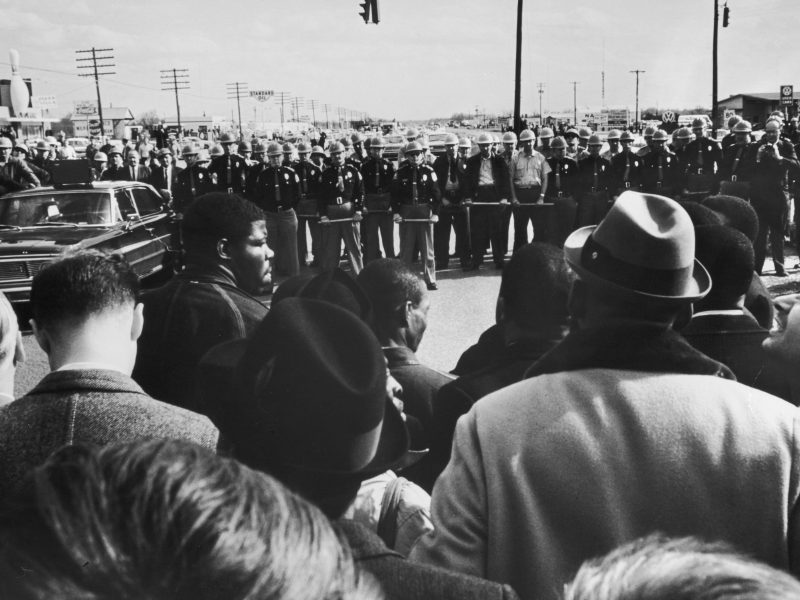
In 1965, protesters marched from Selma to Montgomery, Alabama, to demand equal voting rights. The march turned violent on Sunday, March 7, otherwise known as "Bloody Sunday," when demonstrators were met by the authorities on the Edmund Pettus Bridge, who attacked them with billy clubs and tear gas.
This photo was taken just before the violence started, as a mass of police officers formed a barricade to block the demonstrators from continuing on their march.
Police officers held a protester down as they arrested him in 2020.
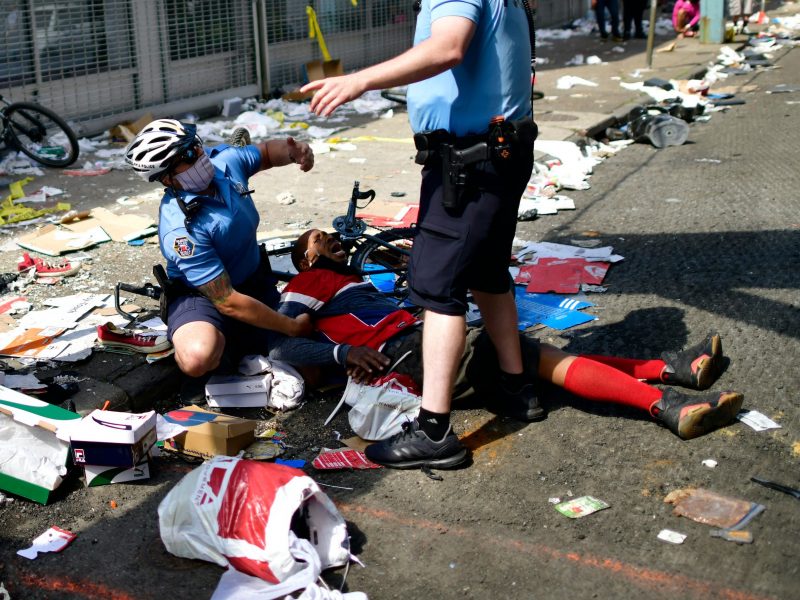
Philadelphia is one of many cities currently dealing with violence and looting, with some stores choosing not to open because of the protests.
In this photo, two Philadelphia police officers apprehended a protester. One officer held him down to the ground, while the other stands over them.
A protester was similarly held by police in 1968.
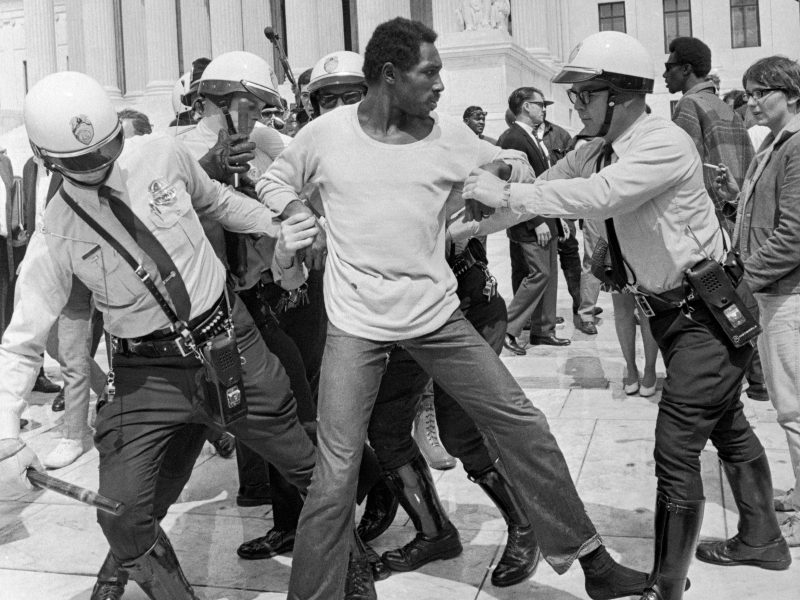
In 1968, protesters gathered at the Supreme Court as part of the Poor People's Campaign, an effort organized by Martin Luther King Jr. to spotlight black people suffering from poverty throughout the United States. At the demonstration shown in the photo, four police officers arrested a protester, holding him from behind with batons in hand.
A demonstrator waves an American flag at a protest following the death of George Floyd.
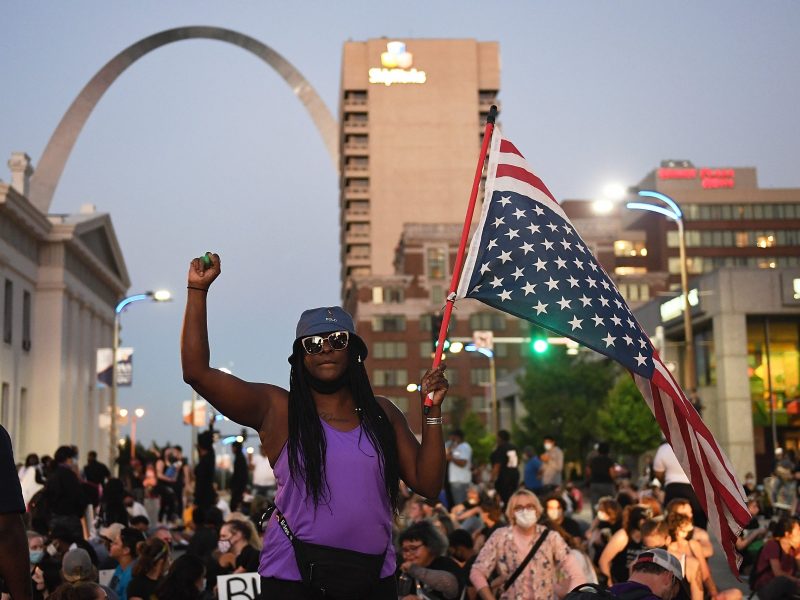
The protests have spread to St. Louis, where the downtown area and highways have been shut down by large groups of demonstrators.
Activists held American flags as they protested voting laws in Alabama in 1965.
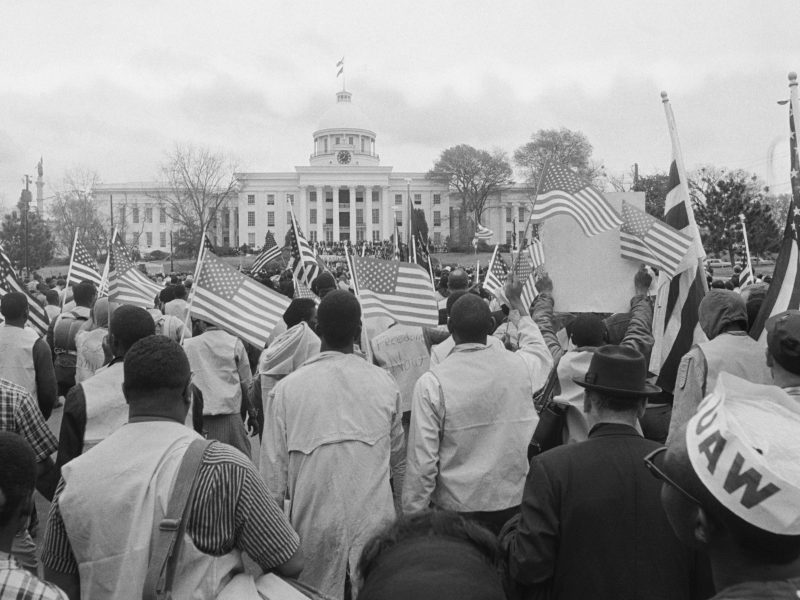
At the end of the march from Selma to Montgomery, protesters gathered at the Alabama State Capitol, where Martin Luther King Jr. gave his "Our God is Marching On" speech, which marked a turning point in the civil rights movement.
"How long? Not long, because no lie can live forever. How long? Not long, you shall reap what you sow. How long? Not long," King said in his speech.
He continued: "How long? Not long, because the arc of the moral universe is long, but it bends toward justice."
A police officer points his baton after knocking down a protester near the White House in Washington, DC.
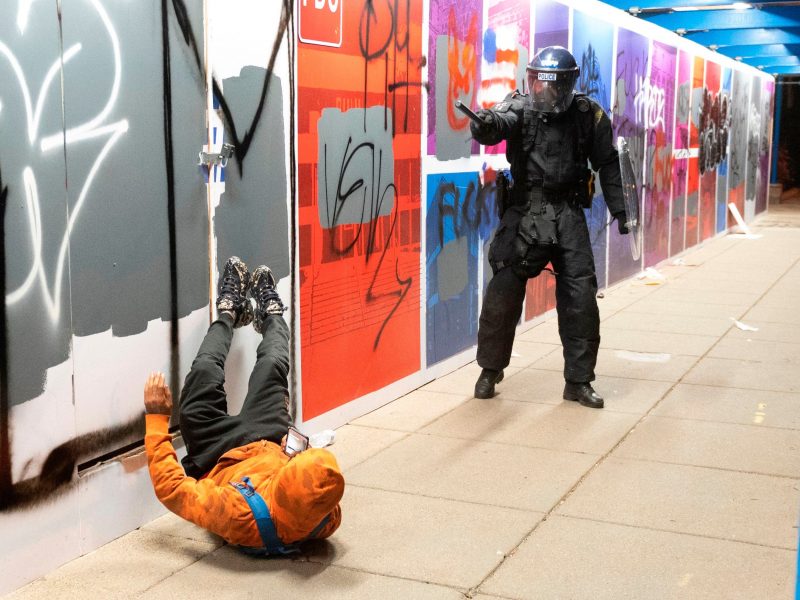
Police officers' use of force increased as the protests in DC became more violent on Sunday. For instance, in this shot, a protester struggles on the ground as an officer points at him using his baton.
Police officers responded to a riot in 1964 with excessive force, including the use of batons.
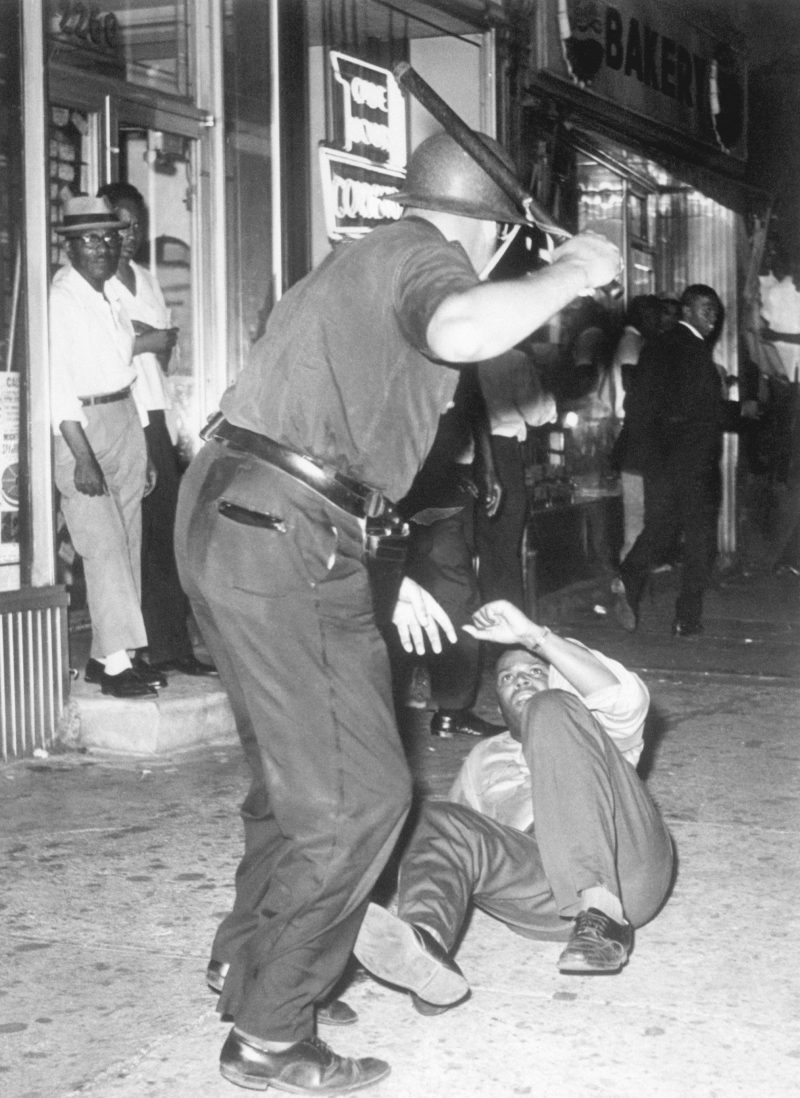
Riots broke out in Harlem, New York, in 1964 when a white, off-duty police officer shot and killed a 15-year-old black student, as NPR reported. The protests quickly turned violent, as this photo shows. A police officer strikes at a protester, as the man raises his hands to protect himself against the baton.
Protesters watched a liquor store burn amid riots in 2020.
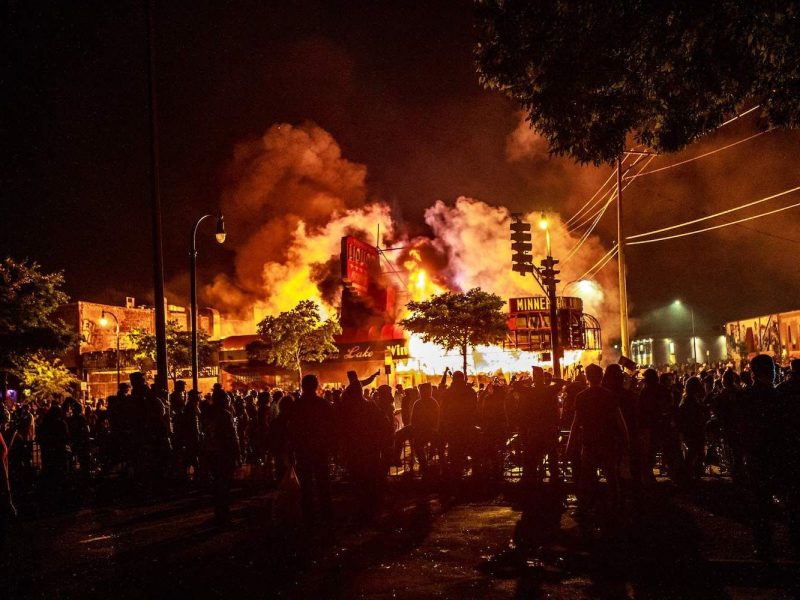
Protesters started setting fires to buildings in Minneapolis on the Thursday following George Floyd's death, with the police meanwhile escalating the violent demonstrations across the city with the use of tear gas and rubber bullets.
In 1968, protesters set fire to a building in Harlem.
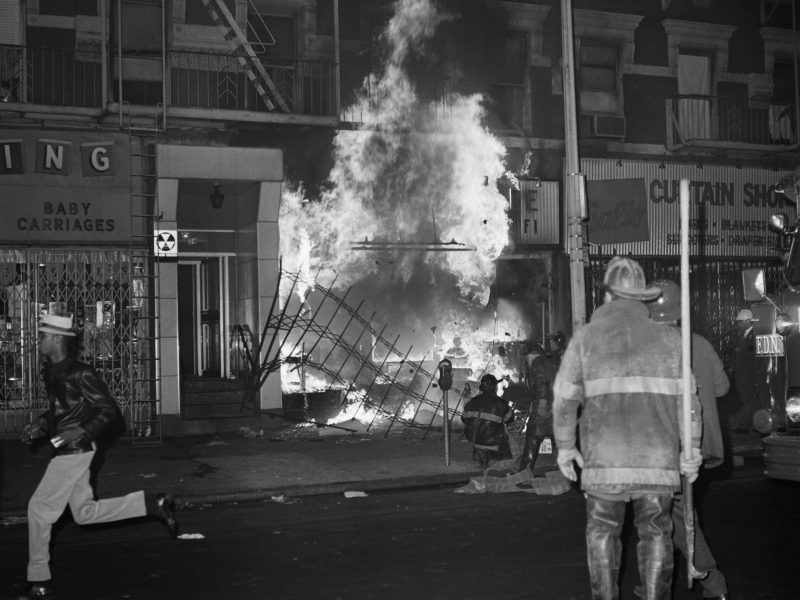
Riots broke out across the United States after Martin Luther King Jr. was assassinated, with his supporters taking to the streets to protest his murder, according to History. This photo shows a building burning in Harlem during the riots in 1968.
Protesters use "I can't breathe" as a rallying cry in 2020.
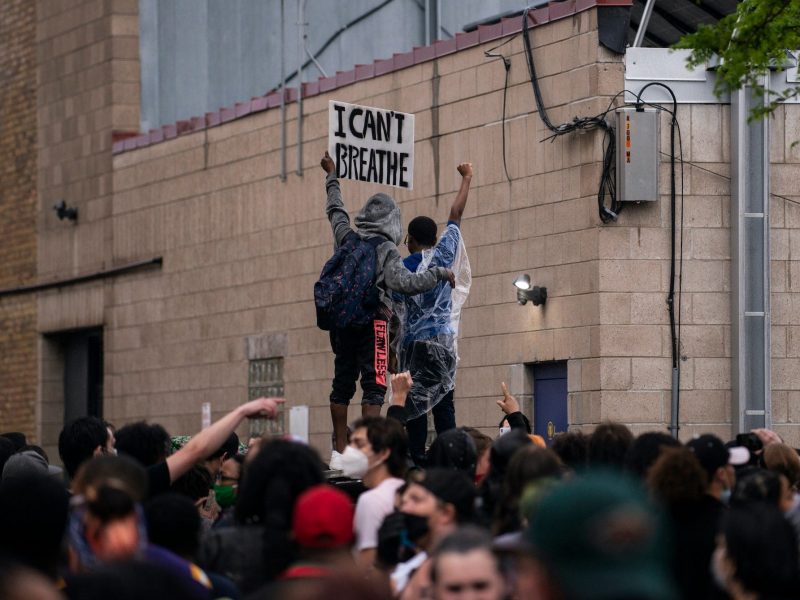
Before the protests in Minneapolis escalated - with a truck driving through a crowd of protesters on the highway on Sunday - they were largely peaceful.
For instance, a photographer captured two protesters calmly standing on a raised surface, setting them apart from the countless people surrounding them.
"Black Power" was a popular phrase for civil rights activists in the 1960s.
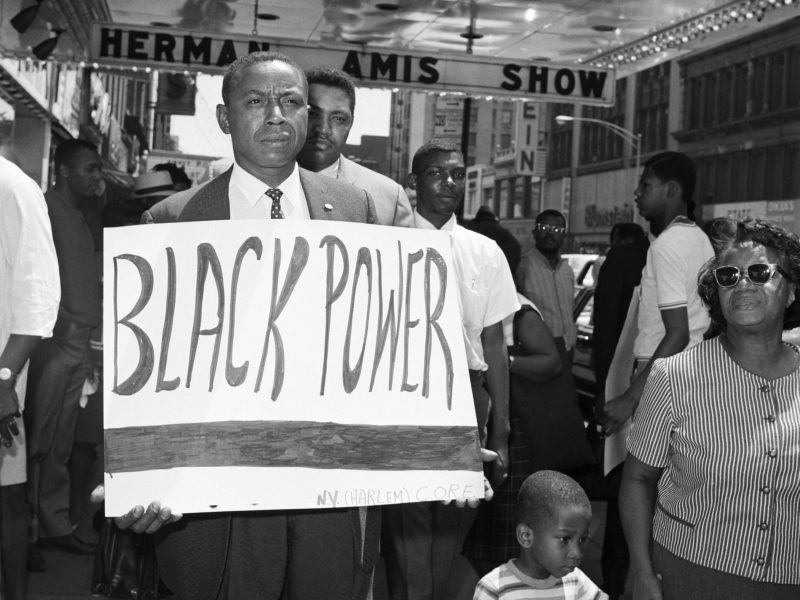
The 1966 national director of the Congress of Racial Equality is at the forefront of this shot, standing alongside protesters calling for voting equality.
In the 1960s, the Black Power movement was about encouraging black Americans to create cultural, political, and economic power of their own rather than settle for integration into a white-dominated society, according to the National Museum of African American History and Culture.
Protesters marched on the Brooklyn Bridge in 2020.
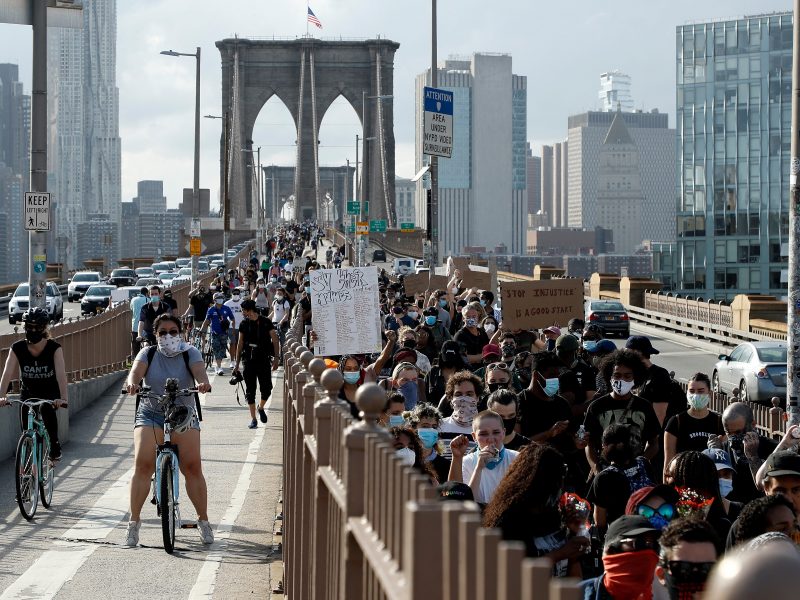
The protests in New York also escalated over the weekend, with police cars ramming into protesters and officers using pepper spray on demonstrators.
Protesters also started marching along the bridges between Manhattan and Brooklyn as demonstrations popped up all over the city.
Activists previously marched across the Brooklyn Bridge in 1964.
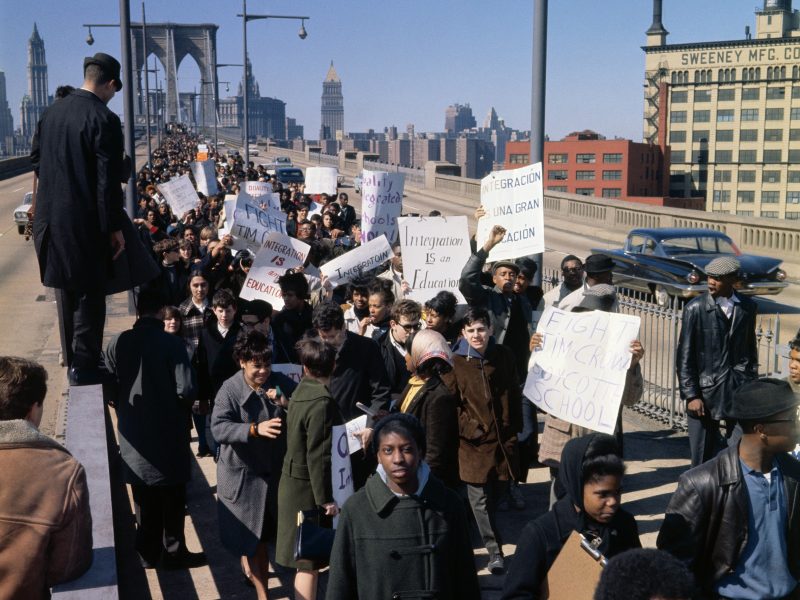
To protest school segregation, activists marched to Brooklyn from Manhattan in 1964, with many students joining protests over the course of that spring to call for education equality, according to The New York Times.
Much like their 2020 counterparts, the protesters carried signs and faced the police. The familiar sight of the Manhattan skyline in the background drives home the similarity between the struggles black people faced during the civil rights movement and the issues they face today.
- Read more:
- Photos show the George Floyd protests across US cities that sparked curfews, states of emergency and National Guard deployments
- At least 7 people have been shot and killed in this weekend's anti-police violence protests in the wake of George Floyd's death
- Thousands across the UK, Germany, Italy, New Zealand, and Canada condemn racism and demand justice at global Black Lives Matter protests
- Watch inmates at a federal prison in downtown Chicago bang on walls and flash lights in solidarity with George Floyd protesters
